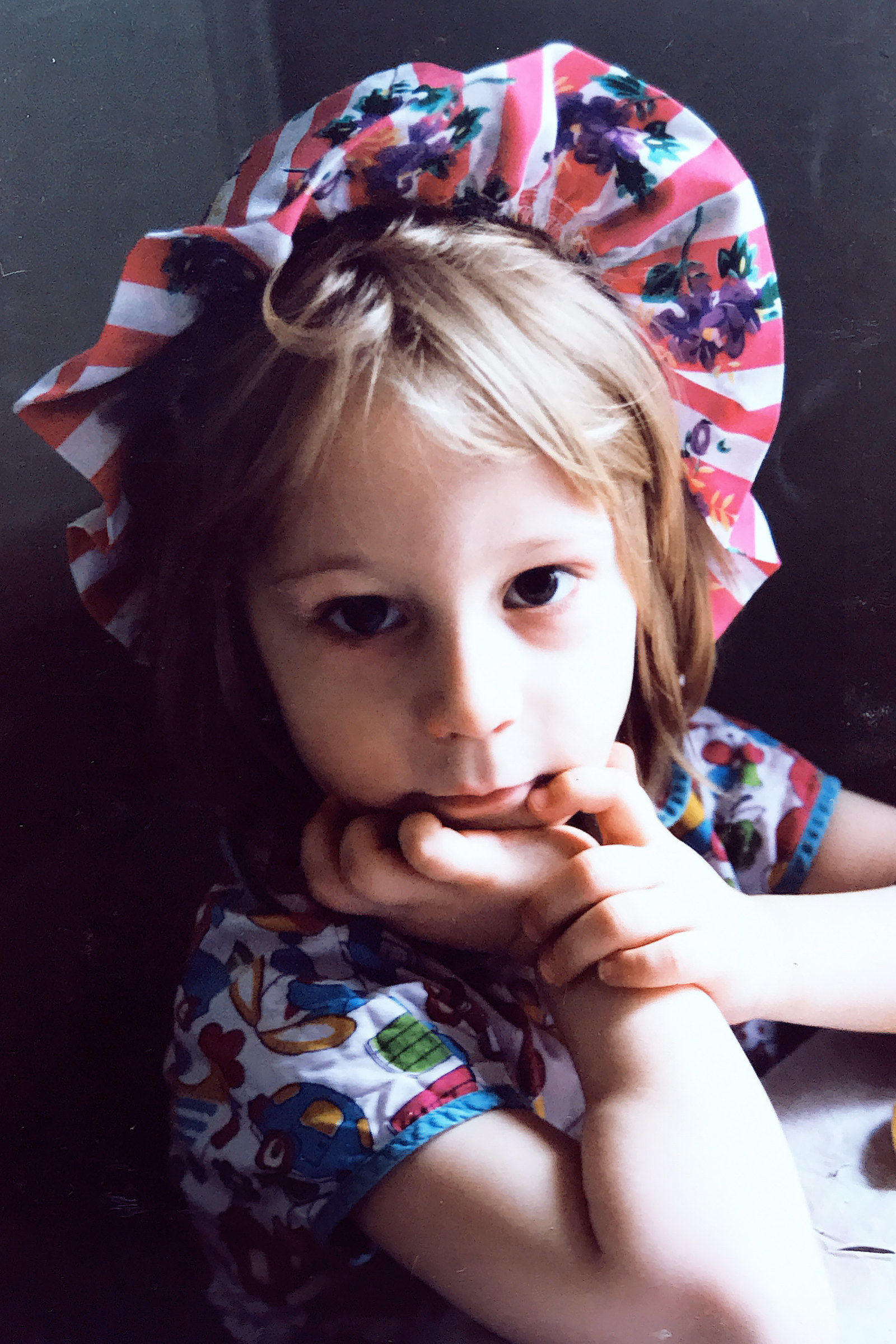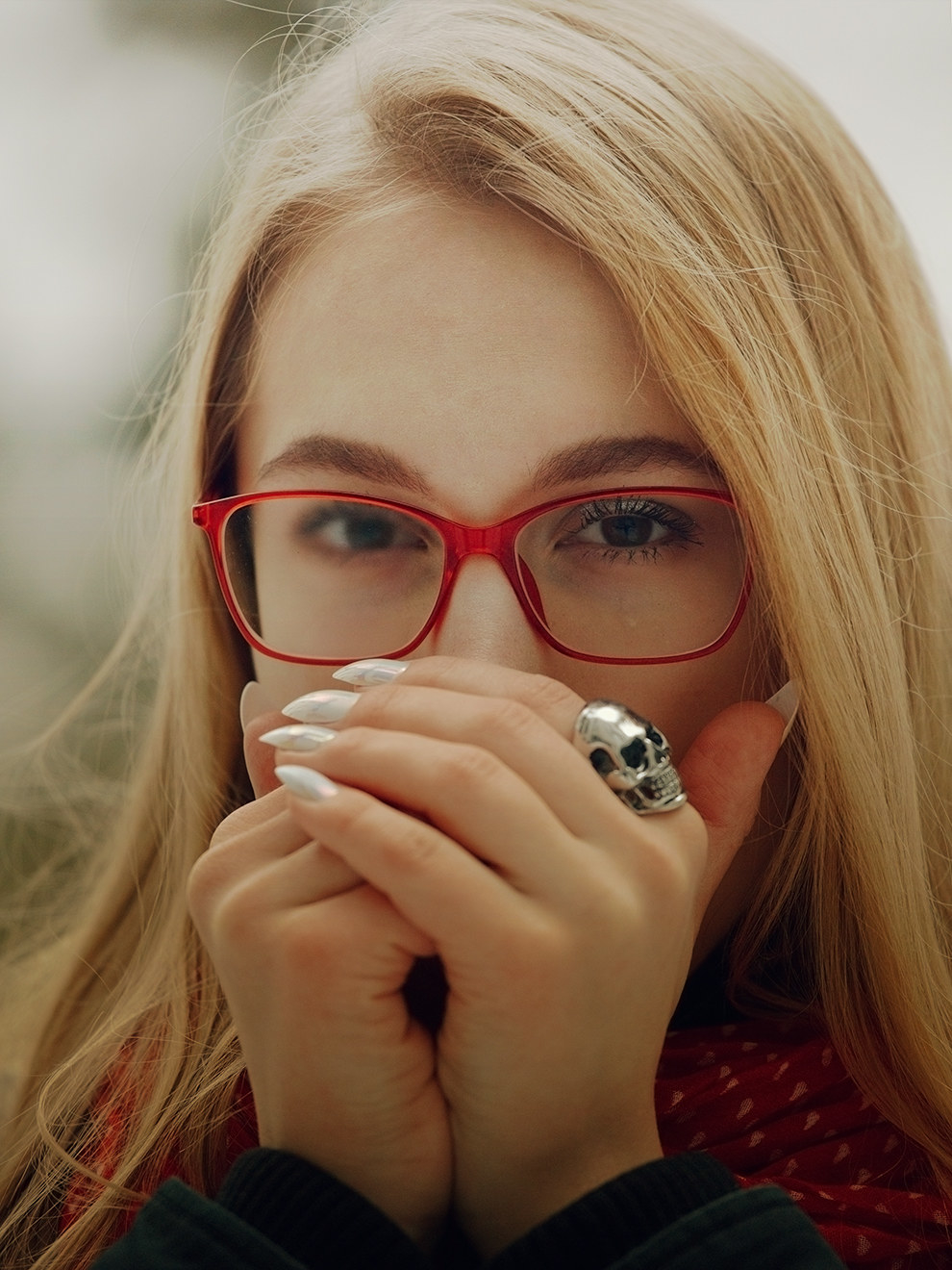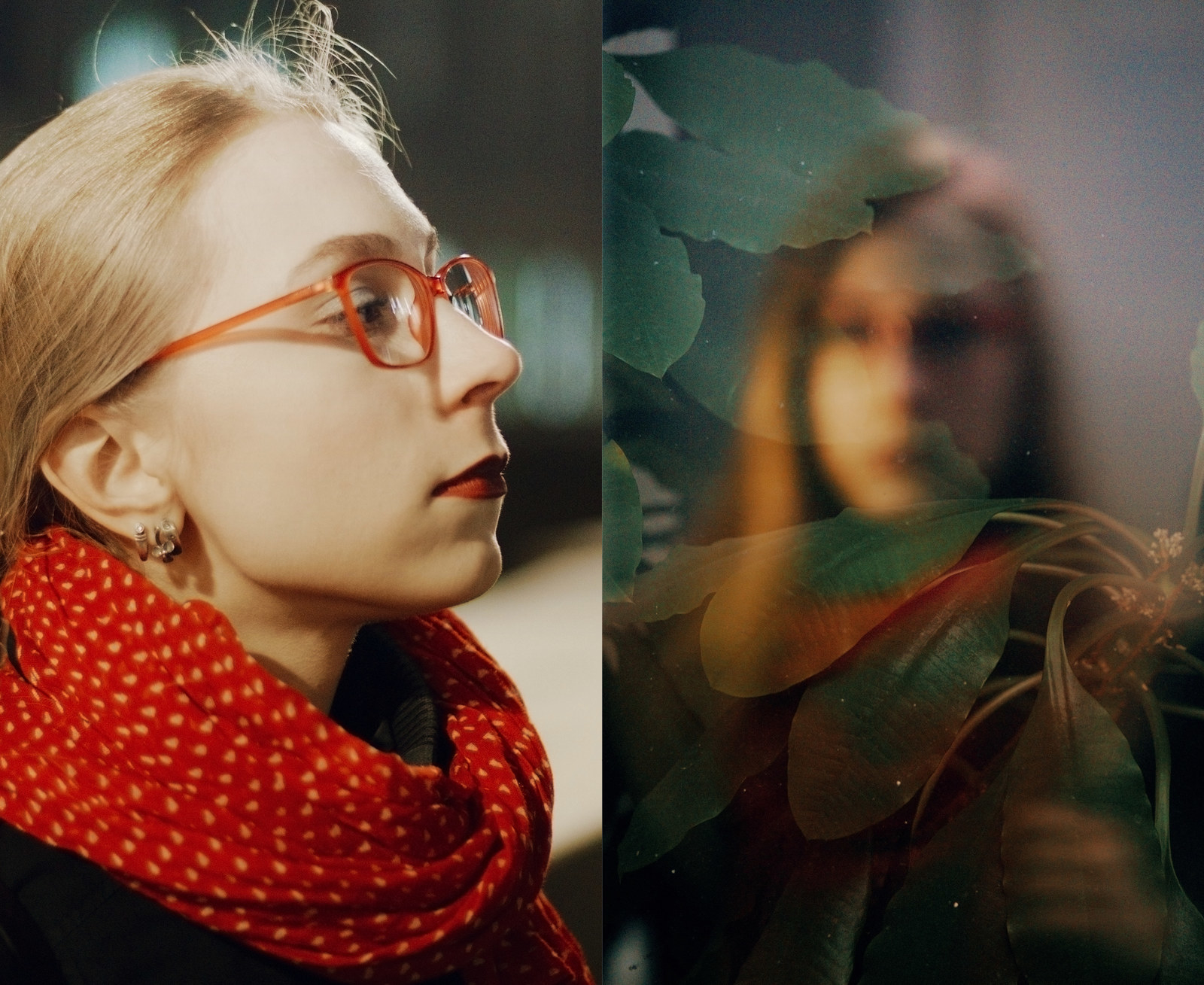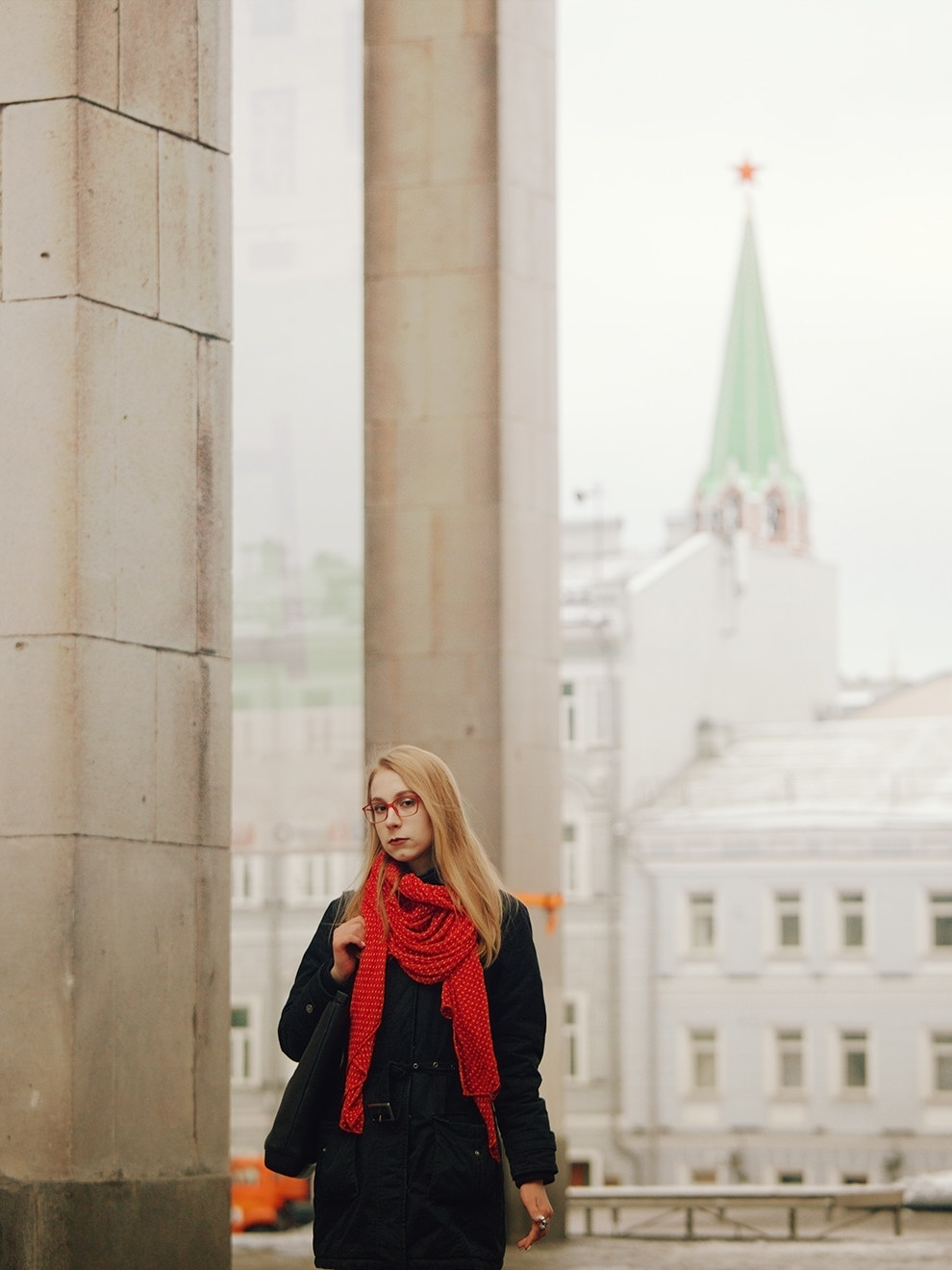It was 4am and Irene Kuzemko couldn’t sleep. Wide awake, she turned on YouTube, looking for distraction. A video popped up, one that she had seen promoted before but had never thought to watch. This time, though, something persuaded her to click on it.
“Little did I know it would change my life so much,” she says now, sitting in the same bedroom in her home in Moscow where she watched it in 2015.
The video, by BuzzFeed, was called “What It’s Like To Be Intersex”. Irene thought intersex was some kind of new gender identity. She had no idea that it was a physical phenomenon, a biological difference in which a body does not align to standard male or female norms, or that it had anything to do with her. Realising this would uncover secrets that had devastated her life for the last 10 years.
Irene had been lied to. She had been operated on and had had organs removed without her knowledge. Those closest to her, those she most trusted, had kept the truth from her.
She had thought she was a freak: a “not-girl-enough monster”. But that feeling was about to unravel.
The video triggered a chain of events that would turn her into her own private sleuth, demanding answers, finding the evidence, and challenging those involved in the cover-up. It would mean losing a parent, but in doing so, discovering who she is.
It would also mean learning about a whole new community.
The term “intersex” includes many different physical variations in which people’s genitals, chromosomes, sex hormones, or reproductive organs diverge from what is typically considered male or female. Someone who looks externally entirely male, for example, can have a uterus, or female (XX) chromosomes.
Knowing this was just the beginning for Irene: She would also realise how wrong she had been to think that no one understood her. She would realise that, in fact, there were so many people around the world — in Britain, the United States, Russia, Asia, and South America — who had also been deceived, cut into as children without their consent and without any medical need to do so. Such operations can require multiple subsequent surgeries, can cause lifelong damage, and can assign the baby the wrong sex so that later on the individual has to transition to the other.
Those operated on include countless children whose parents and doctors told them they had cancer rather than telling them the truth — and adults who only discovered by accident that decisions had been made without their knowledge decades earlier. Others never find out.
Depending on which variations are included, estimates suggest between 1% and 2% of people are on the intersex spectrum, but there are scant figures available about the numbers doctors treat. When approached by BuzzFeed News, the National Health Service in England admitted it did not know how many intersex infants are being operated on.
Over the last three years, Irene has been trying to make up for lost time, and trying to help others like her. Her story not only reveals the extraordinary horrors she has endured but also exposes one of the world’s most ignored human rights violations: operations performed on intersex infants for no reason other than to “normalise” them.
There are potential dangers in Irene speaking out in Russia, but she is determined to keep going. For her, she says, there is no choice: The lies, the silence, and the surgeries have to stop.

The most surprising thing about Irene is her voice. Not the near-perfect English delivered with a light Russian-American accent, but the contrast between her tone and her words. She sounds distinctly perky even when recalling the darkest periods, times when she did not know how to carry on. She smiles a lot, gesticulates a lot — an endless surge of enthused energy. It takes hours for the reason for this to finally surface.
At birth there were no doubts: Baby Irene was a girl. Until puberty, there was also nothing unusual. Her life was entirely unremarkable: a “regular, middle-class” family that divided its time between Moscow and Lviv, a city in western Ukraine.

Irene’s body appeared just like any other girl’s. She was clever and liked dressing as a “tomboy”; she mostly related to male characters in books and films. But then, at 12, her classmates started developing breasts and menstruating. Irene did not.
“Don’t worry,” her mother and grandmother told her. “It will happen.” Their optimism proved unfounded.
“I was freaking out because I had no breasts,” she says. “I felt self-conscious.” By 13 and then 14, when still nothing had developed, her periods continued to elude her and, aware she was also growing hair on her upper lip, Irene asked for help. She persuaded her grandmother in Ukraine to take her to a local specialist doctor.
The gynaecologist listened and recommended Irene for an ultrasound scan, to see what was happening internally. When the results came back, there was cause for hope. According to the doctor, although what was inside Irene did not look like ovaries and did not function as such, some stimulation could jumpstart them into working. The doctor did not explain to Irene what the issue was, nor offer a diagnosis.
Instead, says Irene, “they sent me to these sessions where I would lie down, they would put electrodes on my belly to warm everything up, and put some kind of heavy pillow on top. I would lie there for 40 minutes. I would go to these sessions for several months.” They had no effect.
She thinks now that the Ukrainian gynaecologist simply did not know about intersex variations, and had no idea what was inside Irene. The word intersex, or any variation of it (“hermaphrodite” was once commonly used), was never mentioned. By 15, with no female puberty ensuing and no response to the treatment, Irene was referred to specialists in Moscow. Her father flew in to take her to the new doctors.

“They did all the tests,” she says. “And they never told me any results.” A series of appointments followed, but she was always left outside in the corridor. Her father was there at the hospital with her each time, because he could drive and her mother could not. “They would invite him into the office,” she says — but not Irene. “I never saw my medical records; nobody ever gave me a diagnosis.”
This didn’t particularly trouble her at the time, because, she says, why would it? She trusted the adults, those tasked with her care. Why would they withhold anything from her?
In Russian law, children under 15 need not be consulted about their medical care, but from 15, doctors must obtain consent for everything. On one occasion, Irene remembers her father being called into the doctor’s office for a long consultation — she was again kept outside waiting. Afterwards, although her father explained that they were going to have to operate on her, she says the explanation he gave was that there was something wrong with her ovaries, and that it could be cancerous.
As well as the surgery, Irene says her father told her, the doctors would give her hormones. The upshot of this seemed hopeful: that she could finally begin, aged 15, to develop like other girls.
“I wasn’t scared,” she says, before characterising what she was thinking at the time: Do whatever you want with me, just give me hormones so I can finally grow breasts.
But she did not understand what was wrong with her or what they were about to do. With no clear explanation, she assumed the problem with her ovaries was probably something like polycystic ovary syndrome — a common condition that can trigger hormonal differences and affect fertility. The other girls at her school asked her what surgery she would be having, “and I couldn’t explain properly because I didn’t know myself,” she says, “so I lied and said I had a cyst on my ovary.”
Irene also thought that the surgery would remove just part of her ovaries — the malfunctioning bit.
Her lack of breasts had become a near-constant worry, she says. “When you see other girls getting breasts and you’re the only one that doesn’t have them … I always saw them as a sign of being grown-up and being a ‘real woman’, which I know is silly, but this is what I thought.” She rarely went to sports classes at school to avoid the ultimate crucible of adolescent judgment: changing rooms.
Now, though, the doctors were going to fix her. She would have to take several weeks off school and travel to Moscow, but it would be worth it.
Even what happened just before the surgery was manageable, if upsetting for the teenager. Staff at the hospital gave Irene only minutes warning that the surgery was about to be performed, so she did not have time to untie the numerous friendship bracelets she had made. They had to be cut off.
She was soon wheeled into the operating room. When she came round, her hands and legs were tied to the bed. “I’m high from anaesthesia, I cannot move, and I’m naked. It was creepy,” she says.

There may have been a medically sound reason for this — maybe, she wonders, it was to stop her hurting herself, perhaps picking at the scar — but she does not know, because none of it was explained. She remained in hospital recovering for another week and in Moscow for another few weeks until she was ready to return to school in Ukraine.
The immediate difference she noticed after the surgery was that initially her sexual feelings had vanished. “I didn’t think of it much, I just took it as something that happened,” she says. After all, as far as the teenager was concerned, the malfunctioning ovaries were affecting her hormones, with raised testosterone levels and no oestrogen, so with the operation over and hormone replacement pills being prescribed, there was nothing to worry about.
In fact, she says, “I was so excited — I was like, finally I’m going to have boobs, finally everything is going to be great.”
But nothing that she had hoped for materialised. Irene remained flat-chested. And so, as another year passed, she began to think something was very wrong with her, perhaps uniquely so. It must be, she reasoned: These drugs, this surgery, should work, but it had not. Some hope surfaced at 17 when she began to menstruate, but still there was no sign of breasts.
Her worries spread, infecting her view of herself, unpicking her relationship with her body and the world around her. Social anxiety set in. “On a deep level I thought, I’m horrible and disgusting and shameful. I felt like some kind of monster.”
She watched horror movies and related not to the protagonists but to the monsters.
“I was sinking deeper and deeper into depression,” she says. “I was developing so much shame and self-hatred.” She had another psychological response to the stress and confusion: derealisation. This is a form of dissociation — the term for a range of coping mechanisms in response to trauma — that involves mentally detaching so that your own life, self, and existence, as well as those of people around you, feel unreal. Sometimes they seem like part of a film, or someone else’s life.
“My brain just couldn’t comprehend what was going on,” she says. “And in order to continue living, my brain just stopped believing that any of this [her life] was real.”
What she could not have known at the time was how, in many ways, her subconscious was right: Her reality, constructed by those around her, was false. By the time Irene went to university, the sense of alienation from herself and those around her tainted everything, taunting her continually.
“I accumulated so much self-hatred that I was ashamed of every expression of myself,” she says. “Everything I said, everything I did, everything I thought: ashamed.” Irene describes a coping mechanism she used to try to distract herself from the constant self-loathing. “I had several neutral phrases, like ‘good day’, ‘how are you?’, which I would repeat in my head over and over and over so I would not hear my own thoughts.”
Friends and family tried to help. She told her parents how unbearable she found life and they were supportive, just as her best friend was, but no one understood. Irene is only grateful she was never bullied. “I don’t think I could have stayed alive,” she says. But the difference between her and other women at the point of adulthood was now stark.
It was during the summer of 2015, just after university had finished, when Irene was 22, that she found herself lying in bed unable to sleep one night, bored, clicking on YouTube to pass the time. As she refreshed the page, the intersex video came up.
“I was like, OK, I guess I’ll give it a watch.” One of the first people on the video is an intersex woman called Emily. “She talks about having testes. It was absolutely mind-blowing.”
One of the other facts conveyed in the video is that people can appear as one sex but have the chromosomes associated with another: A woman can have XY rather than XX chromosomes.
Something clicked in Irene, as if all the uncertainty, the suspicions, and omissions suddenly collided, pointing in one direction.
As soon as the video had finished, Irene climbed out of bed. “I ran to my mum, because she was also not sleeping, and told her about it. ‘Oh my god, can you imagine, there is a word for those people; what if there is something different about me? We have to find out.’”
Shortly after, Irene was due for a general check-up at the doctor, so she decided to call her doctor and start asking questions. “What surgery did they perform on me? What did I have? What are my chromosomes? Did I have testes?”
The doctor knew some of the answers without even looking at the file. But before she started answering, Irene put the doctor on speakerphone so her mother, standing next to her, could also hear.
“My doctor said she wasn’t really sure what I had but that yes, they did a gonadectomy.”
The operation performed on Irene aged 15, about which she was told only that it was to remove part of her ovaries, was in fact the complete removal of the gonads, which usually appear in women as ovaries and in men as testicles.
Except that she hadn’t had ovaries. After talking to the doctor, Irene requested her medical records in full. What they revealed changed everything.
There was a testis on the right side and on the left a “streak gonad, which is like a piece of meat that didn’t develop into anything like testes or ovaries. But it also had a little bit of ovarian tissue in it. So I had both testicular and ovarian tissue.”
The report said something else: The operation also involved the removal of her fallopian tube. She had only had one. “At least they left my uterus,” says Irene. This means that she could still have children, through IVF and with a donor egg.
But there was another discovery: She has XY (male) chromosomes.
“I actually remembered when I did a chromosomal test, it was still in Ukraine [as a teenager], but no one gave me the results,” she says. “And I never asked for anything because I never thought anyone would keep things a secret.”
The entirety of the information now available to her after years of silence was overwhelming. “I was so shocked,” she says, “because I thought, How could I have not known this? Why did nobody ever bother to tell me?”
The news itself about being intersex didn’t trouble her particularly. “I never felt bad about it; I thought, Wow! There is an explanation! It felt so good to find the truth and find out I’m not alone.”
But learning the truth had more complicated ramifications than she could initially process. The relief at finally knowing both the diagnosis and what had been done to her soon slid into a sense of horror about how this had been allowed to happen — and who knew.
“I was asking my father, ‘How could you keep that from me?’ And at first he was like, ‘Oh, I thought you always knew everything.’ But I didn’t know, and my mother didn’t know, and for her it was a big shock.” By this time, Irene’s parents had split. “At first she couldn’t even talk to me about it; it was horrible for her.”
A few months after first confronting her father, Irene asked again, “Why didn’t you tell me?” This time, she says, he answered differently and admitted to keeping it all a secret from her on purpose. “I told him, ‘Do you understand that you destroyed my life?’”
Irene says he was unwilling to apologise, and that he instead said that two child psychologists had advised him not to tell her anything. This, she has since discovered, is common advice in Russia and other countries. But her father told her something else, she says: that he should have thrown her medical records away so she could never have known the truth and blamed him for it.
But she did. And she continued trying to ask him about it, demanding answers. “He stopped responding to my messages,” she says. “And after that I cut him out of my life.”
She sounds detached at this point, definite, as if to prevent pain resurfacing. “I have never spoken to him since and he doesn’t try to connect with me. I don’t miss him,” she says. “I don’t regret it at all.”
For Irene, knowing that her father was aware of how depressed she was during her adolescence but concealed the very facts that could have liberated her was an unforgivable betrayal. Knowing that what he did was fairly common did nothing to ameliorate the damage done.
“After we had that talk, for several days I seriously didn’t know how to continue living,” she says. “I could not comprehend that my life could have been 100% different if one person would have told me the truth.
“I was so sad for that little teenage me who had to go through all those years of knowing nothing, that I could have known since the age of 15 that I’m not alone, that I’m normal, that there is a name for people like me, and an entire community.”
She knows everything would have been different, because since the discovery her life has bloomed, transforming unrecognisably from before. Life for Irene now is, she says, divided in two: before she knew and after.
“Discovering I’m intersex was like finding a treasure chest or winning the lottery,” she says. “There was a little bit of shock at the beginning, especially about the chromosomes, but mostly it was just complete euphoria and I immediately started improving how I felt about myself.”
She told her friends, who were supportive. She began furiously researching what being intersex meant medically and socially, what information was available online both in Russian and English, and she started looking for other intersex people.
“I saw in the Russian language there was almost no resources,” she says. “There was literally a couple of activists, a few interviews, a small forum, and that’s it. So I thought, This needs to change.” She started collecting everything in one place — videos, articles, news — on a page on VK.com, a Russian social media platform.
Through social media, she started connecting with other intersex people and a few months later met a fellow intersex woman for the first time in real life. It proved another turning point. “I never thought anyone would even remotely know how it feels to be intersex,” she says.

From there, Irene began attending intersex events and conventions around the world, in Northern Ireland and more recently Argentina.
And in 2016, she finally met one of the people who had changed her life: Emily Quinn, who was the woman who had appeared in the intersex video. It was in Budapest, at an intersex conference. “I just screamed at her, ‘Oh my god, you were in that BuzzFeed video! I’m so happy to meet you!’ It was mind-blowing.”
She then cofounded Intersex Russia, one of the country’s intersex advocacy groups. Her mission is clear. “I want to save intersex children in the future from things I had to go through myself,” she says. “Nobody deserves to have secrets kept from them. I want to change things and save them.” Irene has also become secretary of OII Europe, a pan-European body of national intersex organisations, and a member of InterACT Youth, four members of which were in the BuzzFeed video.
The more intersex people she meets, the more she learns about the experiences of this community.
“So many intersex people experience secrecy, lies, medicalization of their bodies, human rights violations, unnecessary surgeries, and medical interventions,” she says.
This is despite the World Health Organisation, the United Nations Convention Against Torture, and several other human rights organisations condemning unnecessary surgeries on intersex children. A burgeoning number of jurisdictions have also taken steps to recognise it as a human rights abuse, or have outlawed it: Malta, Uruguay, Portugal, and California.
In some parts of east Africa, mothers of intersex infants can find themselves accused of witchcraft. In South Africa, intersex babies are sometimes abandoned or killed. And in Russia there is still a huge task ahead.
“There is almost no awareness,” she says — doctors and the government do not recognise nonconsensual, unnecessary surgeries as a breach of human rights, instead thinking they are helping by making babies conform.”
“Many doctors speak openly in the media about doing surgeries,” says Irene. “Last year an Italian surgeon came to Russia and did a demonstration surgery on a 3-year-old intersex girl, which was broadcast on a big screen at a conference, with 50 people watching and filming on their phones. I have a photo of them filming that surgery.”
But, she says, there is now a growing community of intersex people, in Russia and across the world, supporting each other while trying to inform politicians, doctors, and the public about what is done to them.
There is cause for hope. The British government has embarked on a fact-finding mission calling on activists and experts to convey the problems that urgently need changing: the legal, social, and medical transgressions that have been ignored.
For Irene, life is not perfect. At times she is still affected by shame and derealisation, the shadow of her previous life reappearing. But this is diminishing. “When I get flashbacks of the old self-hatred, I’m like, wow, I used to feel like that? It’s different now.”
She stops for a second and looks suddenly younger, as if sinking momentarily into the girl who was kept in the dark. “I could never have imagined being so confident as I am now,” she says, looking around her bedroom, the place she discovered herself. “I could never imagine talking to so many people, being open about my story. Right now, even at my lowest points the worst days are still better than any of the days I had in my past life.” With this, the reason for her perky manner becomes clear: Recalling the past is nothing compared to having lived it.
She frowns, almost squinting, still trying to grasp how simply everything pivoted.
“All it took was knowing the truth.”
